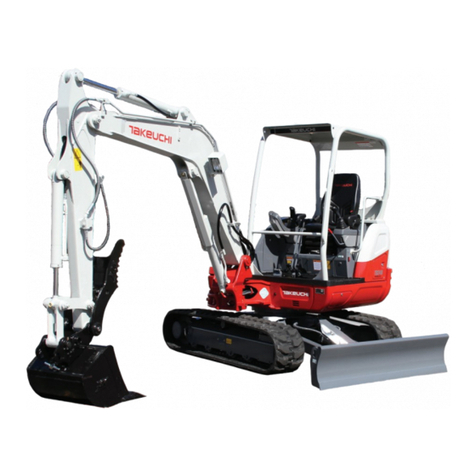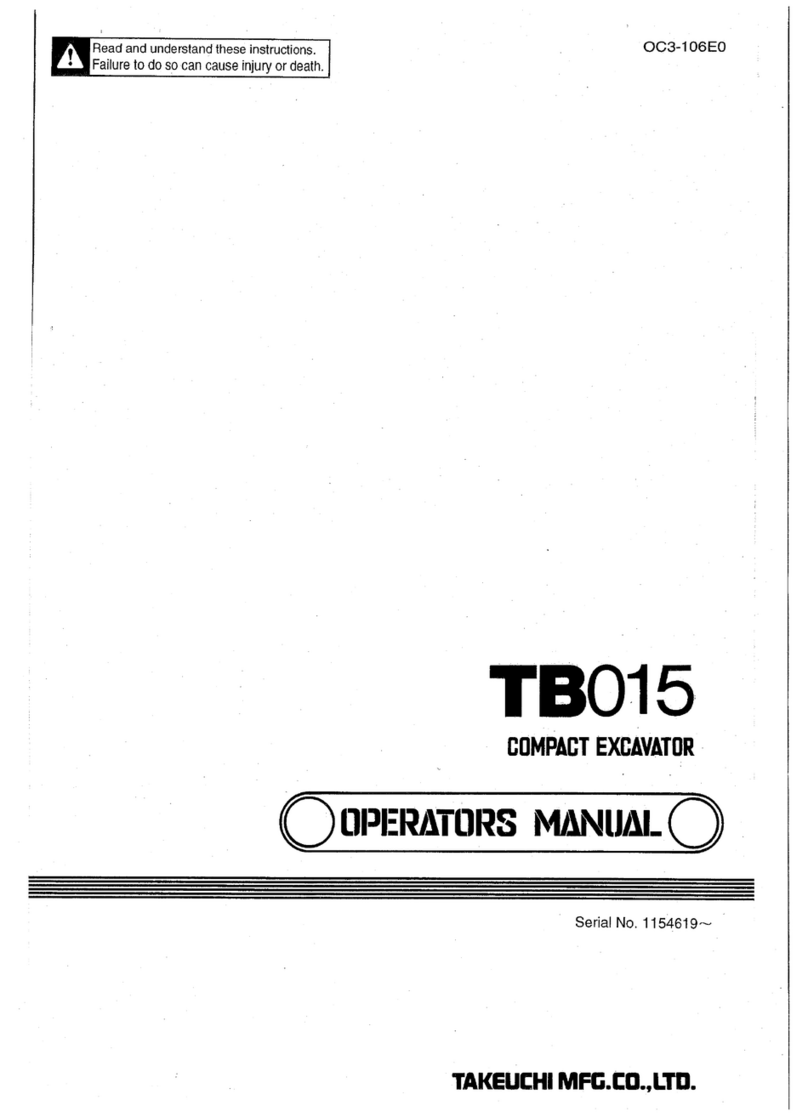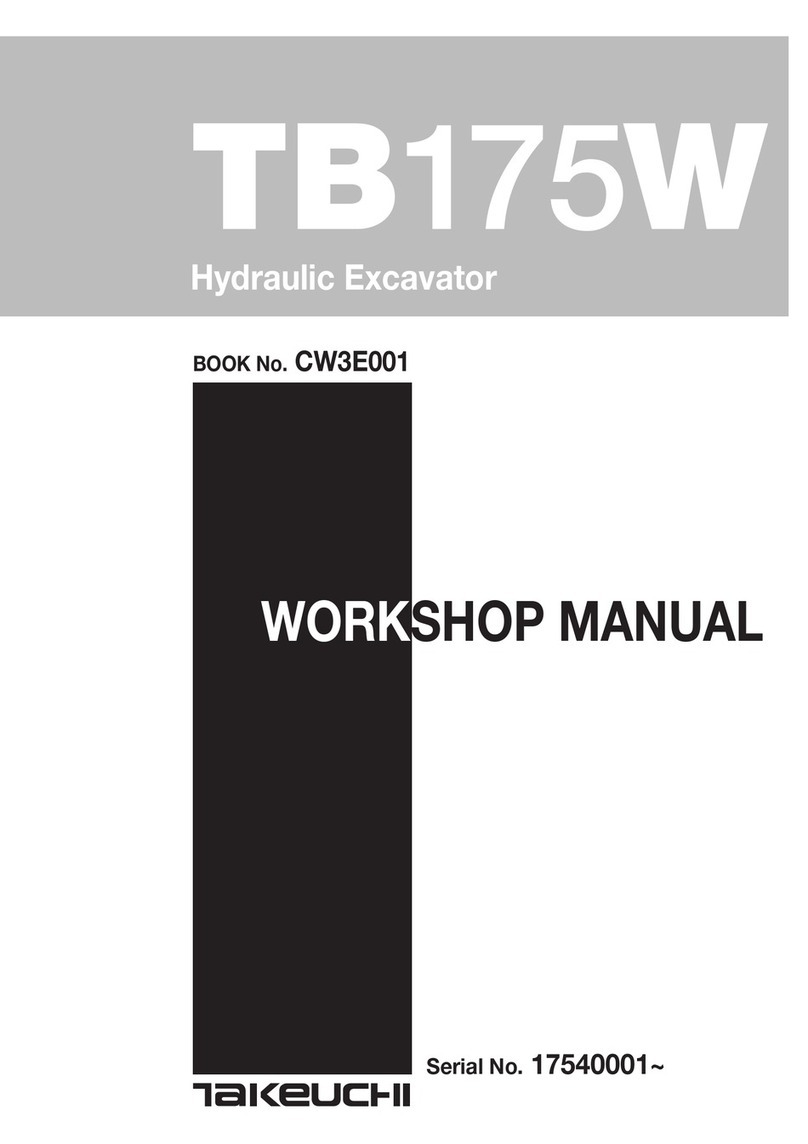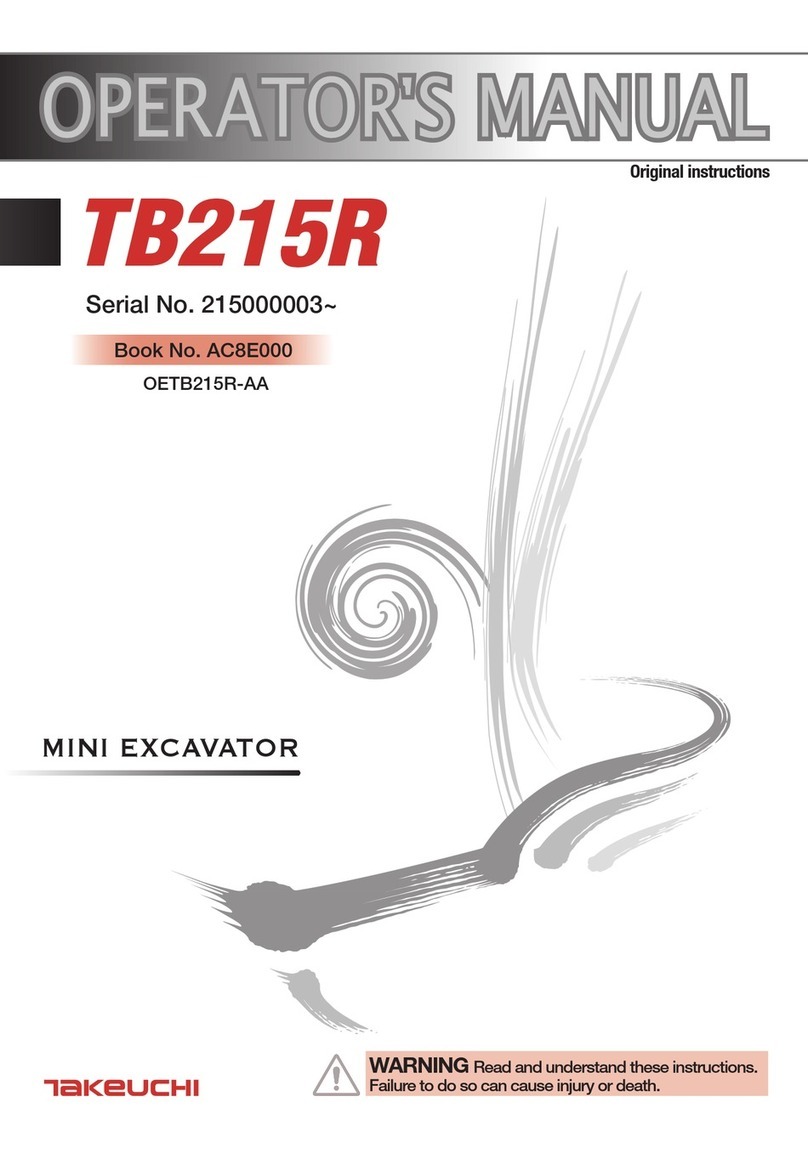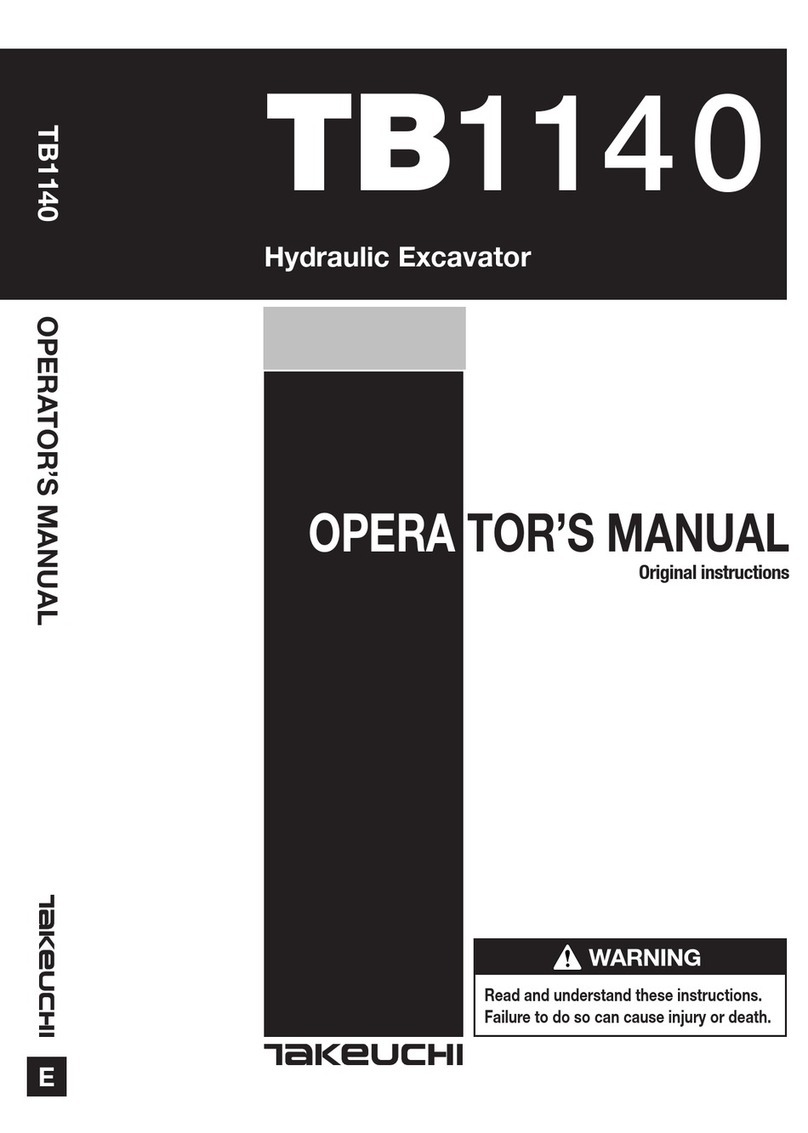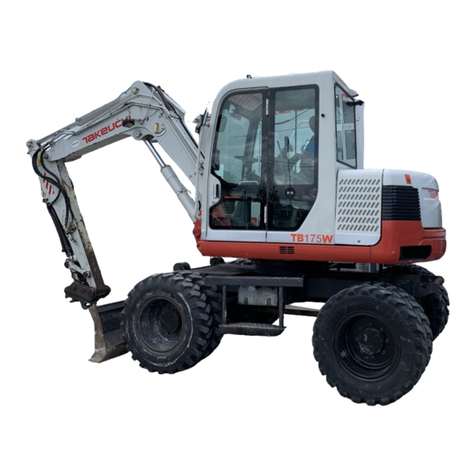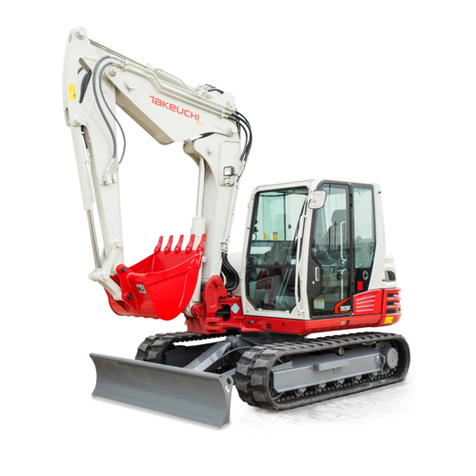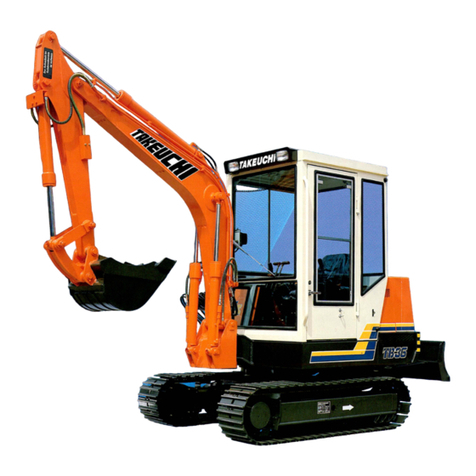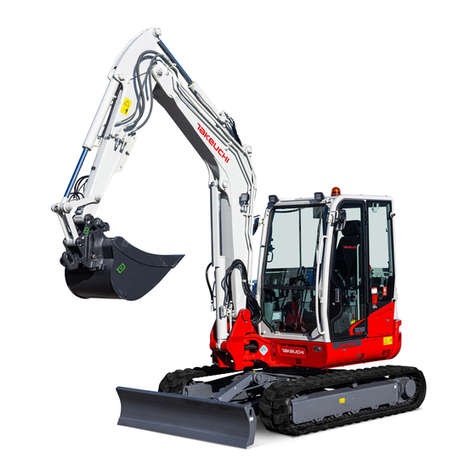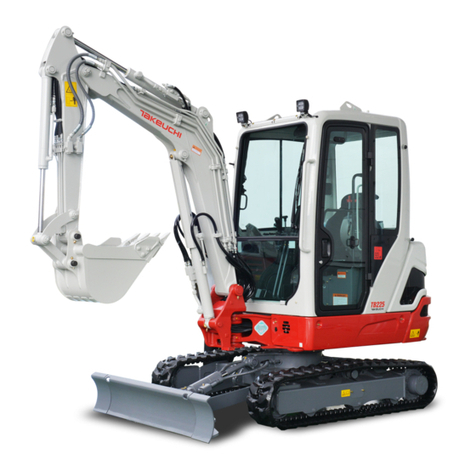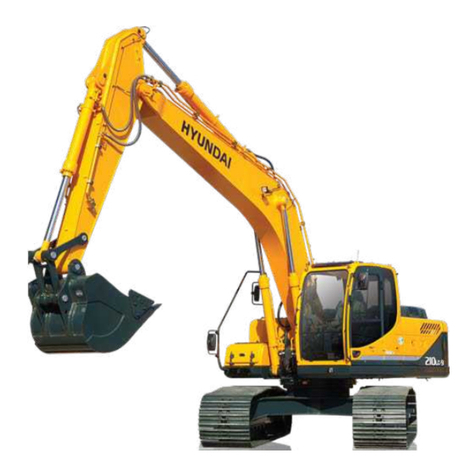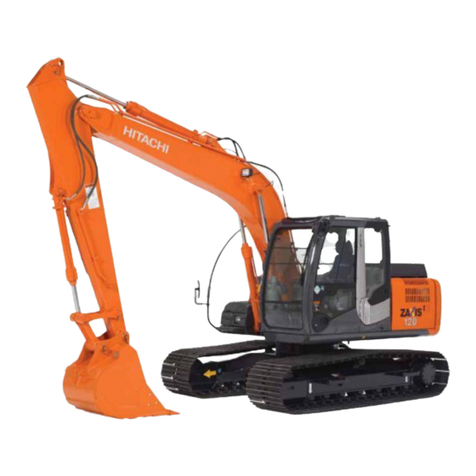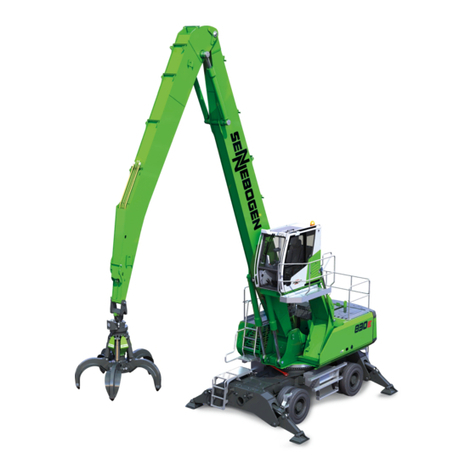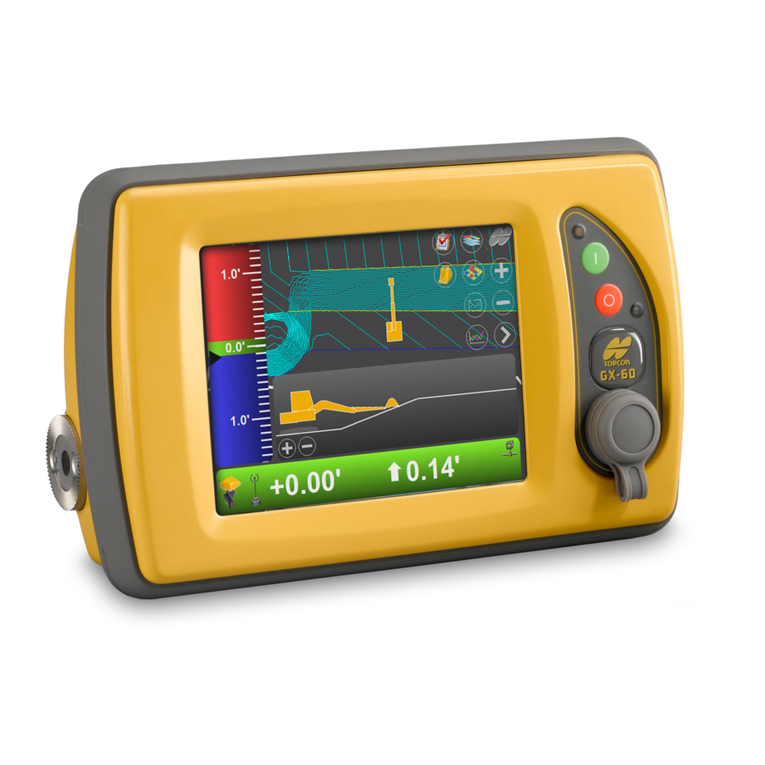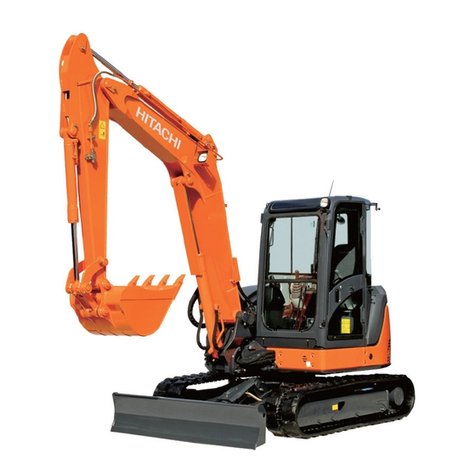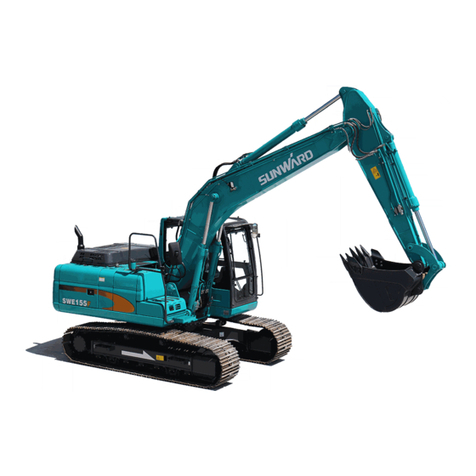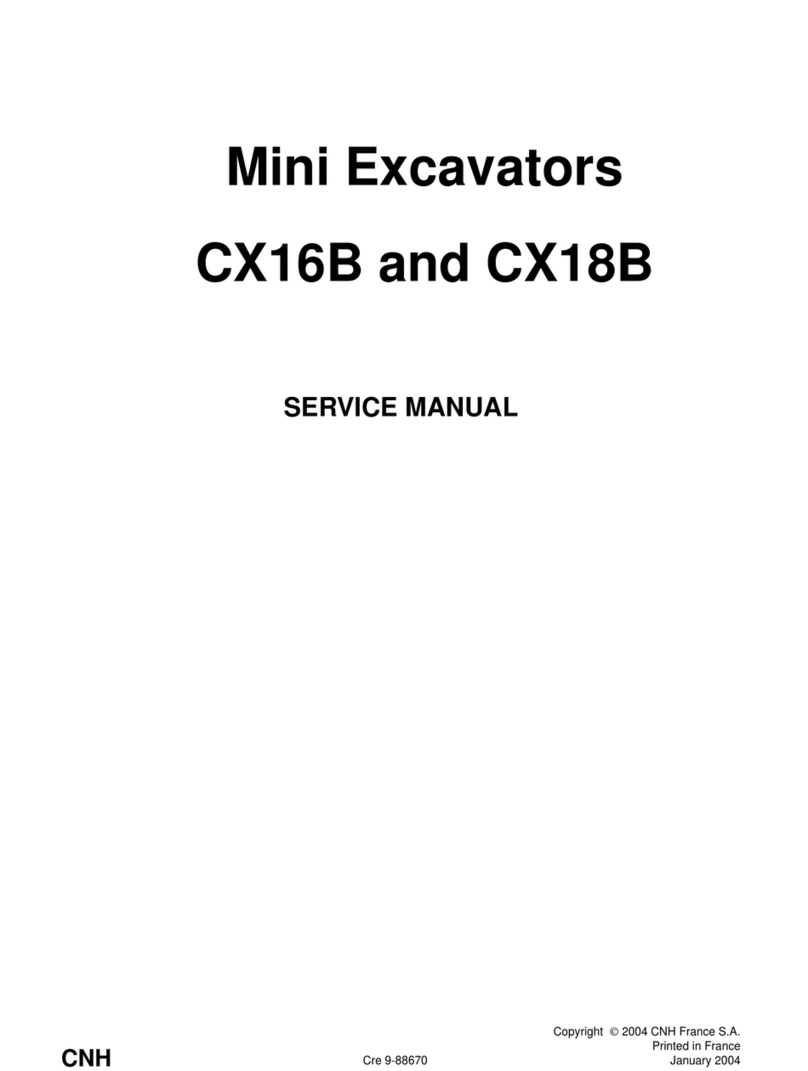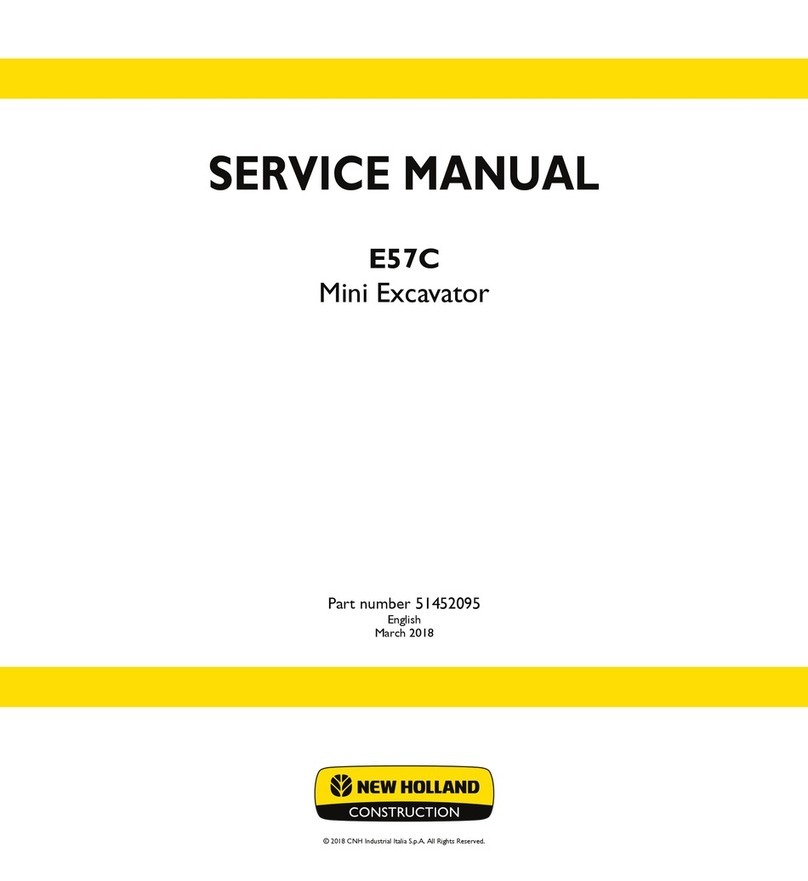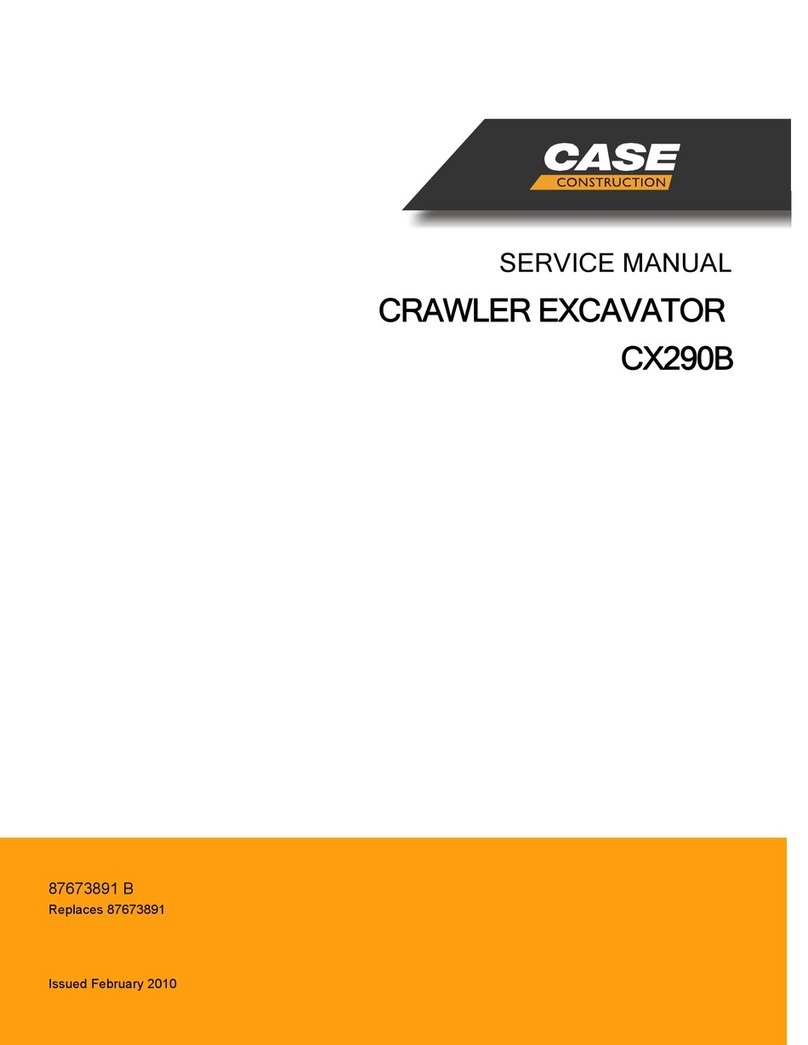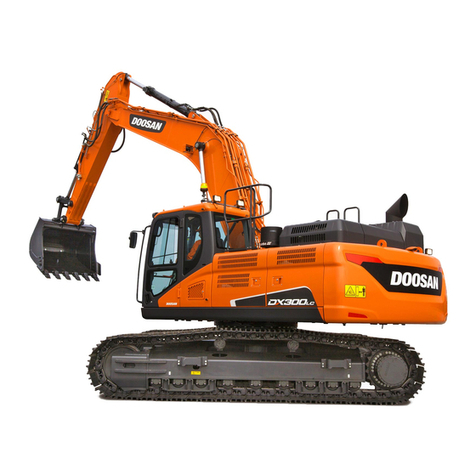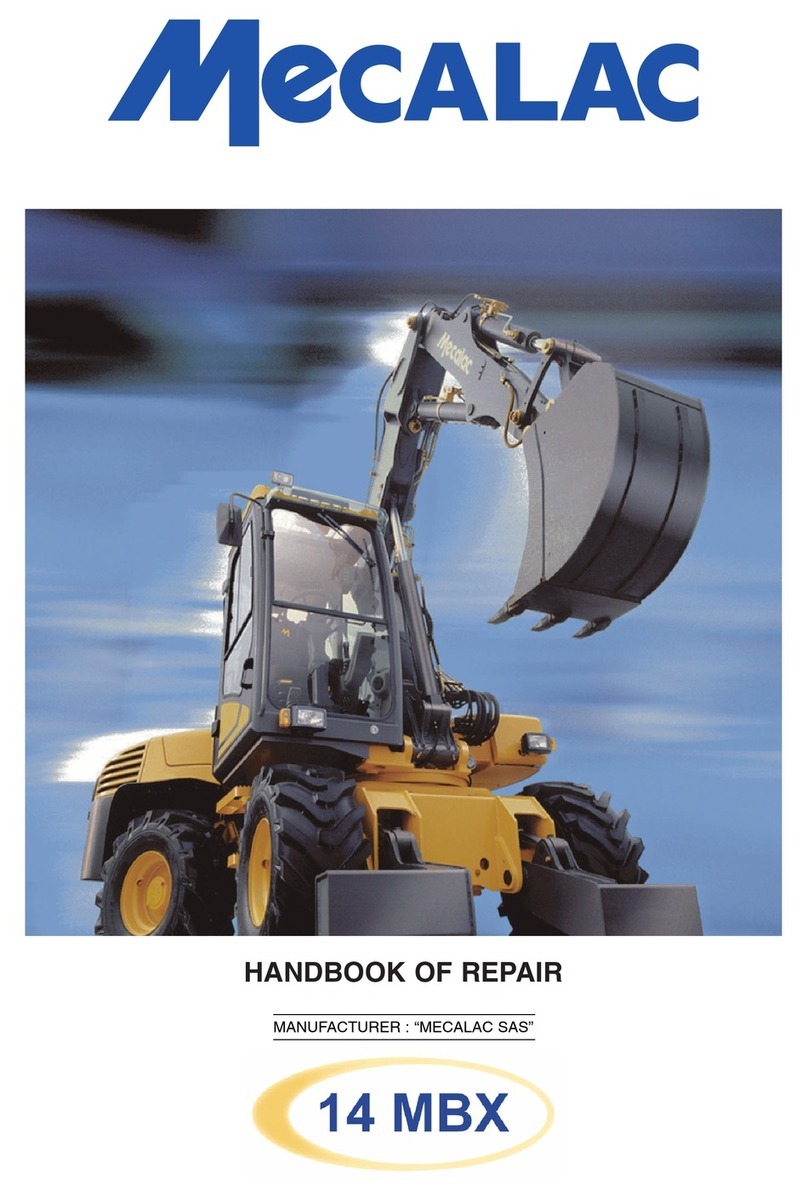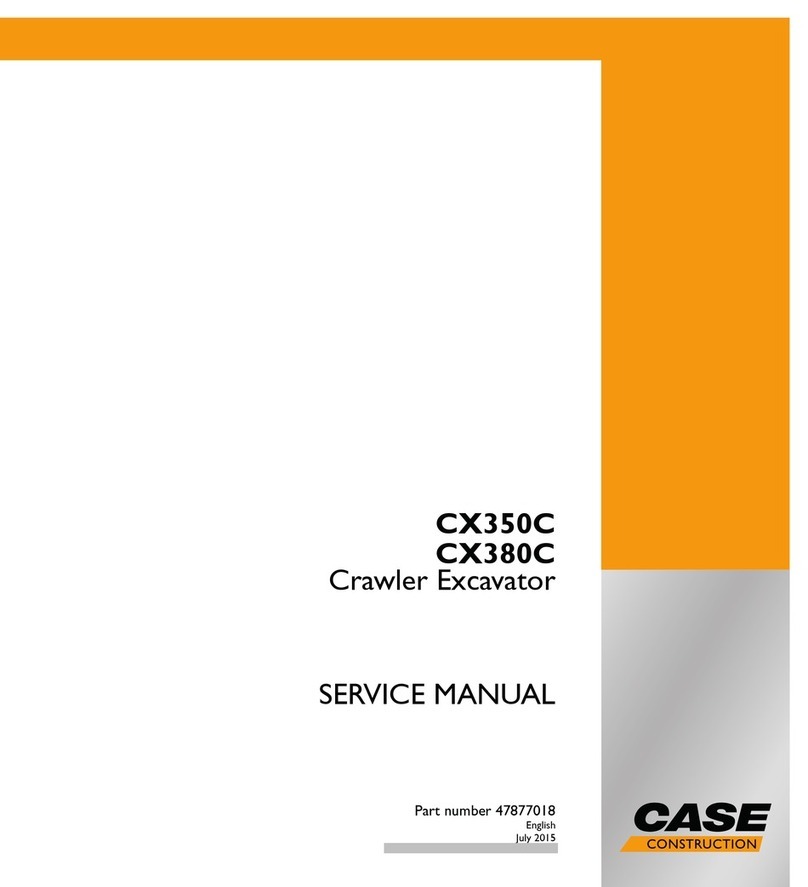0-6
Stopping travel .................................. 3-13
Operating the working equipment...... 3-14
Operating procedures............................ 3-16
Prohibited operations......................... 3-16
Cautions on operating ........................... 3-19
Cautions on traveling ......................... 3-19
Cautions on traveling on slopes ........ 3-20
Getting out of mud ............................ 3-22
Operations possible with this
machine............................................. 3-22
Parking the machine.............................. 3-24
Parking .............................................. 3-24
Inspection and checks after stopping
the engine.......................................... 3-24
Handlingincoldclimates ....................... 3-25
Preparing for cold climates ................ 3-25
Cautions after operations................... 3-25
After the cold climate......................... 3-25
Handlingrubbercrawlers....................... 3-26
Prohibitions........................................ 3-26
Cautions............................................ 3-27
Preventing the rubber crawlers from
coming off ......................................... 3-27
Transport .........................................4-1
Loadingandunloading ............................ 4-2
Hoistingthemachine ............................... 4-4
Securing the machine.............................. 4-6
Maintenance....................................5-1
General.................................................... 5-2
Maintenance overview ......................... 5-2
Cautions on maintenance .................... 5-2
Service data ............................................ 5-4
Fuel and lubricant table........................ 5-4
Regularly replace the hydraulic oil ........ 5-6
Listofconsumables............................. 5-7
Listoftools.......................................... 5-8
Listoftighteningtorques ..................... 5-9
Safety-critical parts................................ 5-10
Maintenance list..................................... 5-12
Walk-around inspection ......................... 5-14
Inspecting by opening the engine
hood and covers................................ 5-14
Inspecting by walking around the
machine............................................. 5-15
Inspecting while sitting in the
operator’s seat................................... 5-15
Daily inspection (every 10 hours)............ 5-16
Inspecting and replenishing the
coolant .............................................. 5-16
Inspecting and replenishing the
engine oil ........................................... 5-17
Inspecting the water separator and
the fuel filters ..................................... 5-18
Inspecting the fuel level...................... 5-19
Inspecting the hydraulic oil tank level
and replenishing ................................ 5-20
Lubricatingtheworkingequipment .... 5-21
After the initial 50 hours
(only for new machines) ......................... 5-22
Replacing the engine oil and the oil
filter ................................................... 5-22
Inspectingandadjustingthefanbelt.. 5-24
Inspectingandadjustingthe
compressor belt (AC)......................... 5-26
Every 50 hours ...................................... 5-28
Inspecting the crawler belt tension..... 5-28
Lubricatingtheslewbearing .............. 5-30
Draining the water from the fuel tank.. 5-31
Inspecting the battery fluid level and
replenishing ....................................... 5-32
After the initial 250 hours
(only for new machines) ......................... 5-34
Replacing the hydraulic oil return filter 5-34
Replacing the pilot line filter................ 5-35
Replacing the travel motor gear oil..... 5-36
Every 250 hours .................................... 5-37
Replacing the engine oil and the oil
filter ................................................... 5-37
Inspectingandadjustingthefanbelt.. 5-37
Inspectingandadjustingthe
compressor belt (AC) ........................ 5-37
Cleaning the air cleaner ..................... 5-38
Cleaning the radiator fins and oil
cooler fins.......................................... 5-39
Cleaning the air filters (air conditioner) 5-40
Cleaning the condenser (AC) ............. 5-41
Inspecting the refrigerant (gas) level
(AC) ................................................... 5-42
Every 500 hours .................................... 5-44
Replacing the fuel filter....................... 5-44
Replacing the water separator filter
<TB285>........................................... 5-46
Replacing the feed pump filter
<TB290>........................................... 5-47
Every 1000 hours .................................. 5-48
Replacing the hydraulic oil return filter 5-48
Replacing the pilot line filter................ 5-48
